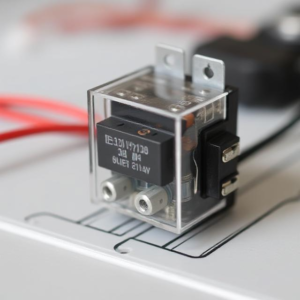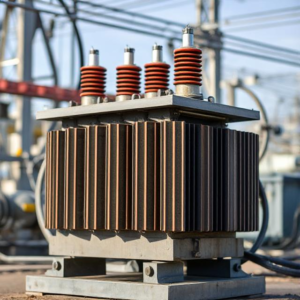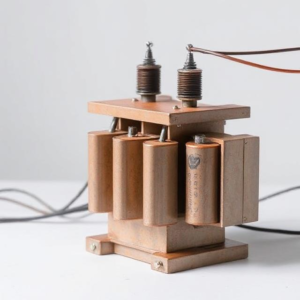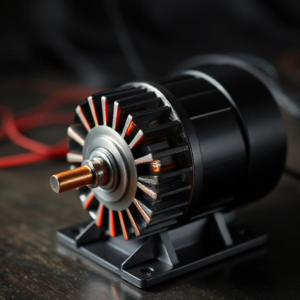1. What is a Relay?
Before we talk about solid-state relays, let’s first understand what a regular relay is.
A relay is an electrical switch that can turn something on or off, but instead of being operated by a physical button, it uses electricity to control the switch. Essentially, it allows a small electrical current to control a larger current. Relays are commonly used in electrical circuits where you need to control high-power devices with low-power signals, such as turning on a motor with a small switch.
A typical relay consists of:
- A coil that, when energized, creates a magnetic field.
- A switch (often called the contacts) that opens or closes based on the magnetic field created by the coil.
When electricity flows through the coil, it pulls the contacts together (closing the switch) or pulls them apart (opening the switch), controlling the flow of current to another part of the circuit.

2. What is a Solid-State Relay (SSR)?
A solid-state relay (SSR) works the same way as a regular relay — it turns something on or off — but instead of using mechanical parts like a coil and physical switch, it uses electronic components like semiconductors to perform the switching action.
In simple terms, a solid-state relay is a relay without moving parts. It uses electronic circuits (like transistors, thyristors, or triacs) to control the switching process.
3. How Does a Solid-State Relay Work?
Here’s how a typical SSR works:
- Input Side (Control Circuit): When you send a small electrical signal (like from a low-voltage controller or switch) to the input side of the SSR, it triggers the internal electronic components inside the SSR.
- Switching Mechanism: The internal components (such as a triac or MOSFET) use the small signal to control a larger current that flows through the output circuit. Essentially, the small control signal tells the SSR to either allow or stop the flow of power in the larger circuit.
- Output Side (Load Circuit): When the SSR activates, it either closes or opens the path for a larger current to flow to the load (like a motor, light, or heater). The SSR completes or breaks the connection based on the control signal.
4. Advantages of Solid-State Relays
- No Moving Parts: Unlike mechanical relays, SSRs don’t have any parts that physically move to make or break a connection. This means they are more reliable and longer-lasting.
- Faster Switching: Because they don’t rely on mechanical movement, SSRs can switch on and off much faster than regular relays. This makes them ideal for applications that require quick response times.
- Silent Operation: Since there are no moving parts, SSRs don’t make the clicking sound that mechanical relays do when they switch on and off.
- Better Durability: SSRs can handle more shock and vibration since they don’t have physical contacts that can wear out over time.
- No Arcing: In mechanical relays, the physical contacts can arc (spark) when they open or close, especially when dealing with high currents. SSRs don’t have this issue because they don’t physically touch to make the connection.
5. How is a Solid-State Relay Different from a Mechanical Relay?
| Feature | Mechanical Relay | Solid-State Relay (SSR) |
|---|---|---|
| Operation | Uses moving mechanical contacts | Uses electronic components (like transistors, triacs) to switch |
| Speed | Slower (due to physical movement) | Faster (instantaneous switching) |
| Noise | Makes a clicking sound when switching | Silent operation |
| Lifespan | Wear and tear on mechanical contacts | Longer lifespan (no physical wear) |
| Switching | Can cause arcing (sparks) at high current | No arcing, safer in high-current situations |
| Size | Larger and bulkier | Compact, smaller |
| Power Consumption | May require more power for activation | Low power consumption to activate |
| Cost | Generally cheaper | Slightly more expensive |
6. Applications of Solid-State Relays
SSRs are used in various applications because they are reliable, fast, and efficient. Here are a few examples of where they are commonly used:
- Industrial Control Systems: SSRs are used in factories to control large machines, motors, or heating systems. They allow a small control signal (like from a microcontroller) to turn on/off high-power devices safely.
- Home Appliances: SSRs are used in appliances like toasters, washing machines, or HVAC systems to control heating elements or motors.
- Lighting Control: SSRs are used in systems where lights need to be controlled remotely or in smart lighting systems.
- Communication Systems: SSRs can be used in communications equipment to control signal routing or power.
- Medical Devices: SSRs are used in medical equipment for controlling temperature, lights, or other functions because of their reliability and precision.
7. Common Types of Solid-State Relays
- AC Solid-State Relays: These SSRs are used to control alternating current (AC) loads, like motors or lights in industrial applications.
- DC Solid-State Relays: These are used for direct current (DC) loads, such as controlling DC motors or other low-voltage devices.
- Zero-Crossing SSRs: These SSRs are designed to switch when the AC signal crosses zero volts (the point where the AC signal changes direction). This reduces electrical noise and stress on the circuit.
- Relay Modules: Some SSRs come in modules that can be easily interfaced with microcontrollers like Arduino for controlling electronic devices remotely.
8. Limitations of Solid-State Relays
While SSRs are great in many applications, they do have a few limitations:
- Heat Dissipation: SSRs can generate heat when switching high-power loads. This means they may need heat sinks or cooling systems to stay efficient.
- Cost: SSRs are typically more expensive than mechanical relays, although the price gap is closing as technology advances.
- Limited Voltage: Some SSRs are designed for specific voltage ranges, so you need to ensure you choose one that fits your application.
9. Summary
- Solid-state relays (SSRs) are electronic switches that control high-power devices without using moving parts. They rely on semiconductors (like transistors or triacs) to switch the circuit on or off.
- SSRs have several advantages over traditional mechanical relays, such as faster switching, silent operation, and longer lifespan.
- They are used in a wide range of applications like industrial control, home appliances, lighting systems, and even medical equipment.
- While they are more reliable and efficient, SSRs can be more expensive and require careful heat management when dealing with high-power loads.











